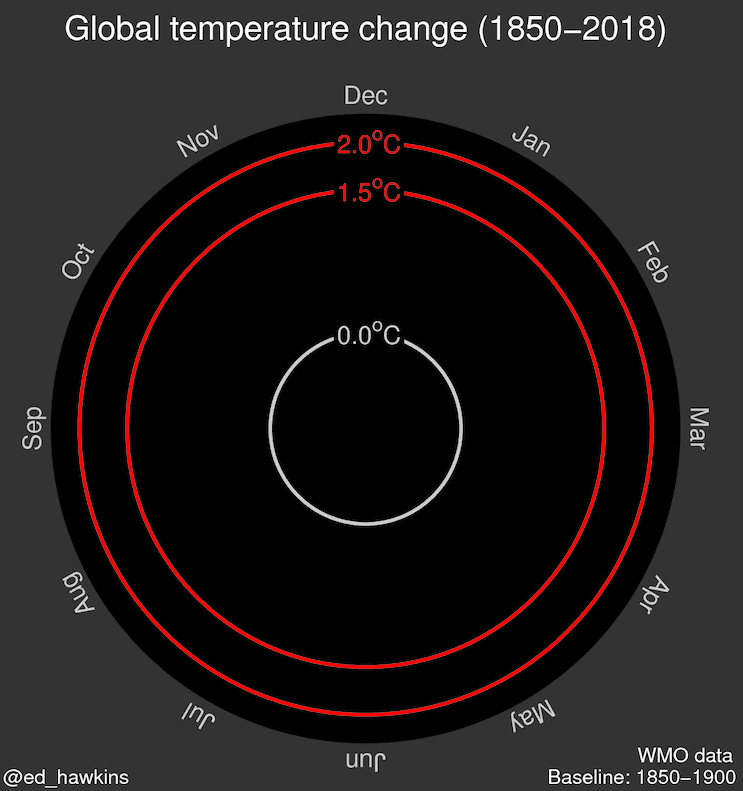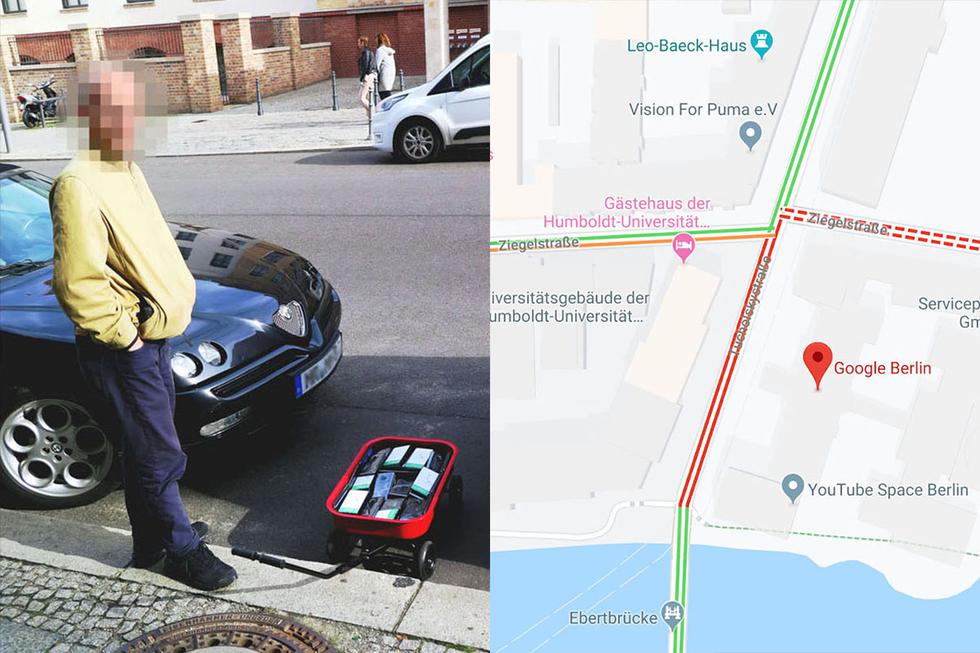atlas of weak signals
24th of February to 14th of March 2022
faculty: José Luis de Vicente
"climate emergency and how "culture changes slower than biophysical systems"
We started the seminar with a first session about today’s environmental context. As a society, we have a “cognitive problem” and even though all the information about the climate situation is available to all of us, we continue acting as if it didn’t exist. It reminded me of the concept of cognitive dissonance where our behaviours is in opposition with our beliefs and values. Everything we do, eat, consume, has consequences at larger scales. But we don’t see it.
We need devices and stories to be able to see this and I liked that this seminar started with the work of different artists, designers, experts, activists that create interventions, visual representations of data, art, protests... and keep trying to find creative ways to show how the planet is changing in front of our eyes.
I think this is where design has an important role to play, because from apocalyptic distopia, accelerationism to solarpunk cities, the different visions of the future often show a huge lack of imagination. I believe more in adaptation and resilient lifestyles, learning about what we forgot and recreating the lost links with the living world.


Berlin artist Simon Weckert who created a virtual traffic jam on Google Maps by transporting 99 phones (see here)
life in the time of surveillance capitalism and beyond
In this session, we discussed the concepts of attention monopoly, data extractivism, data brokerage, production of intelligence. Since the beginning of web 2.0, our digital experiences are built around attention economy. All the likes systems, notifications, infinite scrolls done with the objective of creating more engagement mostly around a few big companies has dangerous consequences that we already experienced from fake news to Cambridge Analytica scandals.
But is this coming to an end?
The development of web 3.0 with its values of decentralization might be an alternative to the current attention economy model. Web 3.0 or not, designers (UX but no only) have for sure a responsibility in avoiding these dark patterns.
I am interested in exploring further how to design to avoid information bubbles, redesign our social interactions, create transparent algorithms, and would be curious to see how we can work on this not only in the digital but also in the physical world.
In this session, we discussed the concepts of attention monopoly, data extractivism, data brokerage, production of intelligence. Since the beginning of web 2.0, our digital experiences are built around attention economy. All the likes systems, notifications, infinite scrolls done with the objective of creating more engagement mostly around a few big companies has dangerous consequences that we already experienced from fake news to Cambridge Analytica scandals.
But is this coming to an end?
The development of web 3.0 with its values of decentralization might be an alternative to the current attention economy model. Web 3.0 or not, designers (UX but no only) have for sure a responsibility in avoiding these dark patterns.
I am interested in exploring further how to design to avoid information bubbles, redesign our social interactions, create transparent algorithms, and would be curious to see how we can work on this not only in the digital but also in the physical world.
life after AI and the end of work
What is a job? We can see it as the place where we find a sense of purpose and identity. This last idea of what a job is made me think about the vision carried by the Arts & Crafts movement (see William Morris) as a way for humans to express themselves, to create beauty.
However, it has also become a unit of production in the capitalist system. And as we discussed during the session, this system is sitting on a lot of unpaid work of care done by women. Today, AI and automation question the future of some jobs that will not need to be performed by humans anymore.
In that case, what future do we envision when jobs as units of production will not be needed anymore?
I think the alternatives are quite exciting. 4 days weeks and universal basic incomes have been already experimented in some countries or by some companies. What is often opposed to universal basic income is that if given a salary with no conditions, people would do nothing and become lazy. I consider it is sad to think so, and the experiments carried in various countries always proved the contrary, people involved themselves in care activities, took more time to find purpose in their activities when the fear of not being able to pay for basic necessities disappears.
Now if it has been tested and works, what prevents it to be applied today? Here again, I think design can play a role in showing and giving life to these alternative realities.
What is a job? We can see it as the place where we find a sense of purpose and identity. This last idea of what a job is made me think about the vision carried by the Arts & Crafts movement (see William Morris) as a way for humans to express themselves, to create beauty.
However, it has also become a unit of production in the capitalist system. And as we discussed during the session, this system is sitting on a lot of unpaid work of care done by women. Today, AI and automation question the future of some jobs that will not need to be performed by humans anymore.
In that case, what future do we envision when jobs as units of production will not be needed anymore?
I think the alternatives are quite exciting. 4 days weeks and universal basic incomes have been already experimented in some countries or by some companies. What is often opposed to universal basic income is that if given a salary with no conditions, people would do nothing and become lazy. I consider it is sad to think so, and the experiments carried in various countries always proved the contrary, people involved themselves in care activities, took more time to find purpose in their activities when the fear of not being able to pay for basic necessities disappears.
Now if it has been tested and works, what prevents it to be applied today? Here again, I think design can play a role in showing and giving life to these alternative realities.
beyond the nation state
Nation is a cultural community, a group of people who belong to the same historical background and share a sense of identity.
State is the political unit that turns a nation into an agent in the international political sphere.
We started this last lecture by all explaining where we came from, where our family came from. It was interesting to see that none of us had an easy and quick answer to this. Our identities are shaped by much more than the borders of nation states, it is impossible to reduce our individual trajectories to one nation, region, language... These conversations reminded me Amin Maloof’s essay "Identités Meurtrières" (English title is "In the Name of Identity: Violence and the Need to Belong") that explains how a lot of violence comes today from the way society defines and tries to simplify identity.
As we see more and more threats to nation states integrity, we need to think of the possible alternatives. In a context of climate emergency, deciding on solutions at the scale of nations does not make sense. Some weak signals show this need for action beyond nation states (movements like Fridays for Future, e-Residency in Estonia, technolgies around web 3.0...) But how to go further? What could be experimented to go towards a world governance?
To relate to my research topics which include agriculture, rural areas and food systems, I think we could also connect these questions to the concept of bioregions ("geographical areas defined not by political boundaries but by ecological systems") that I would like to explore further.
Nation is a cultural community, a group of people who belong to the same historical background and share a sense of identity.
State is the political unit that turns a nation into an agent in the international political sphere.
We started this last lecture by all explaining where we came from, where our family came from. It was interesting to see that none of us had an easy and quick answer to this. Our identities are shaped by much more than the borders of nation states, it is impossible to reduce our individual trajectories to one nation, region, language... These conversations reminded me Amin Maloof’s essay "Identités Meurtrières" (English title is "In the Name of Identity: Violence and the Need to Belong") that explains how a lot of violence comes today from the way society defines and tries to simplify identity.
As we see more and more threats to nation states integrity, we need to think of the possible alternatives. In a context of climate emergency, deciding on solutions at the scale of nations does not make sense. Some weak signals show this need for action beyond nation states (movements like Fridays for Future, e-Residency in Estonia, technolgies around web 3.0...) But how to go further? What could be experimented to go towards a world governance?
To relate to my research topics which include agriculture, rural areas and food systems, I think we could also connect these questions to the concept of bioregions ("geographical areas defined not by political boundaries but by ecological systems") that I would like to explore further.
some inspirations I liked
- The data visualisation work of climate scientist Ed Hawkins
- The work of the studio Superflux “By creating concrete experiences from the future, we want to transform decision making today."
- The “World’s first minister of the Unborn” in Wales, Sophie Howe
- Clay Shirky’s book “Here comes everybody. Revolution doesn’t happen when society adopts new technology, it happens when society adopts new behaviors”
- e-Residency in Estonia for a citizenship beyond physical borders